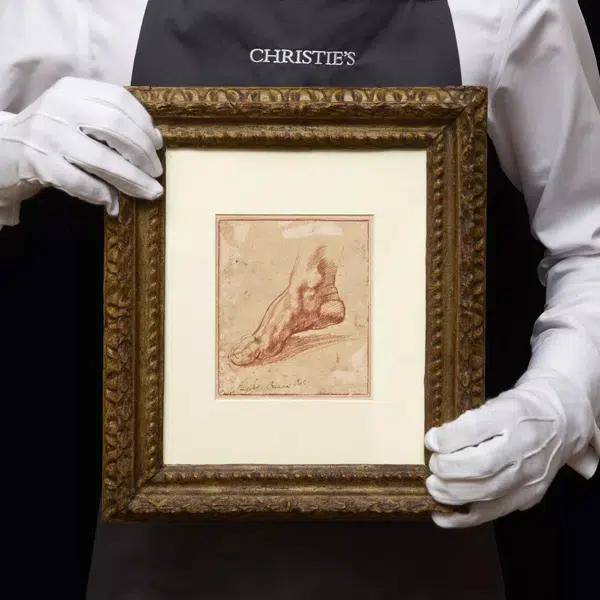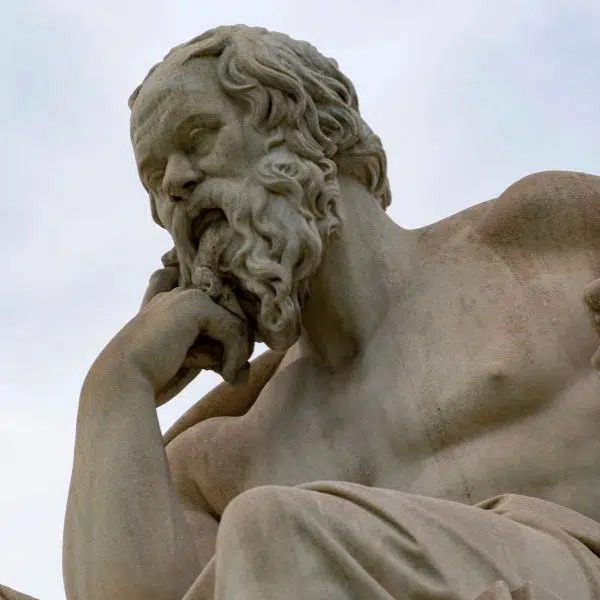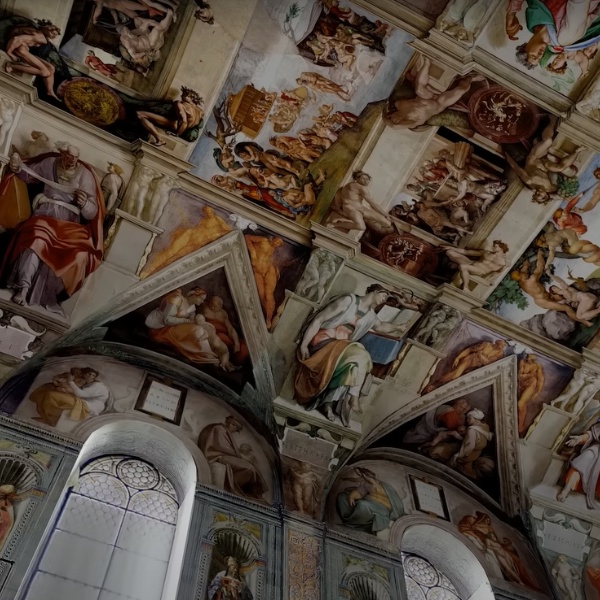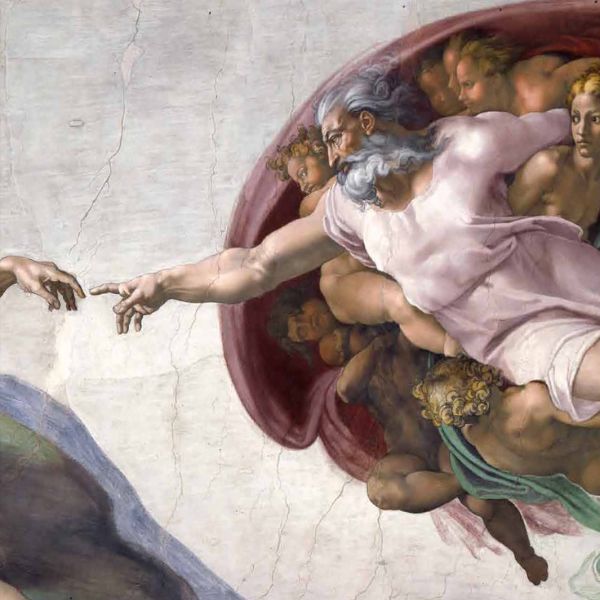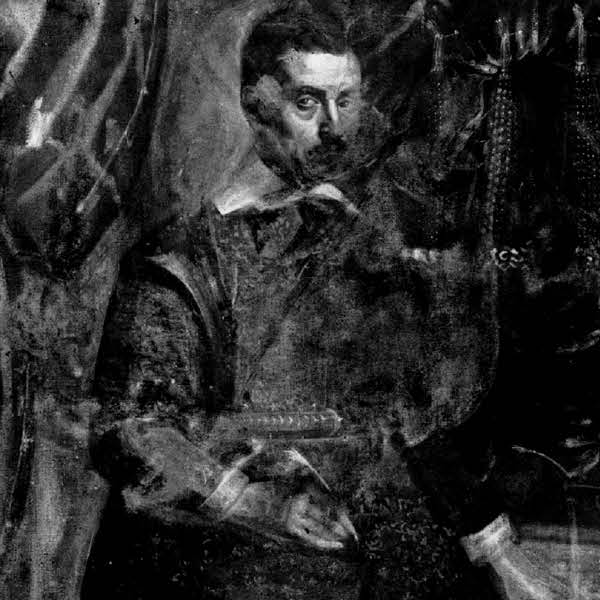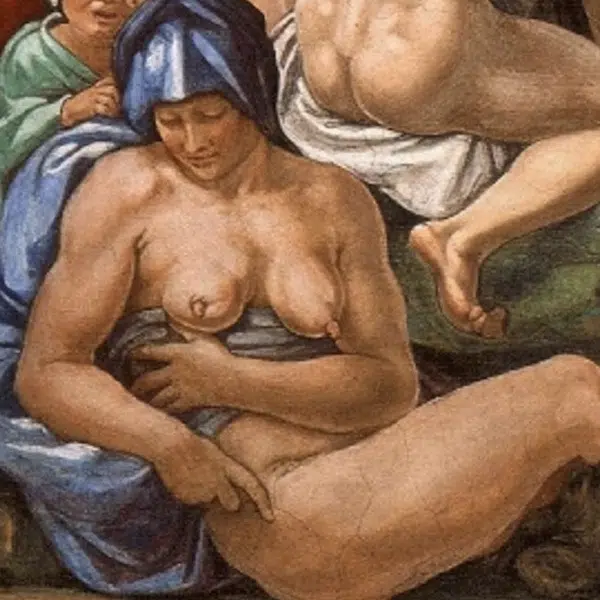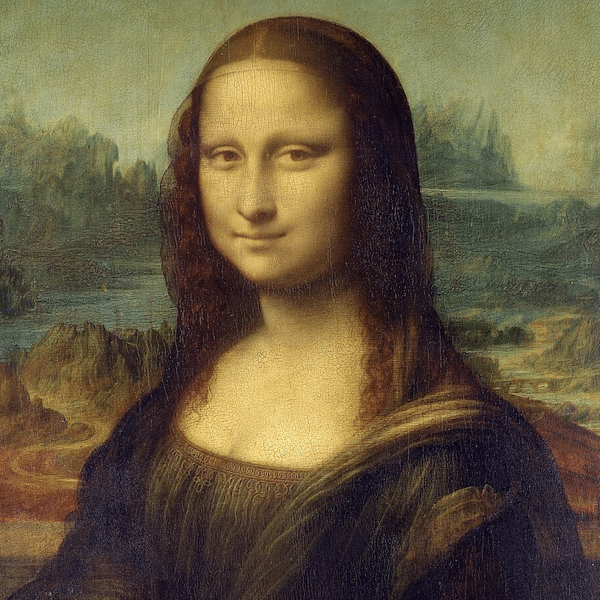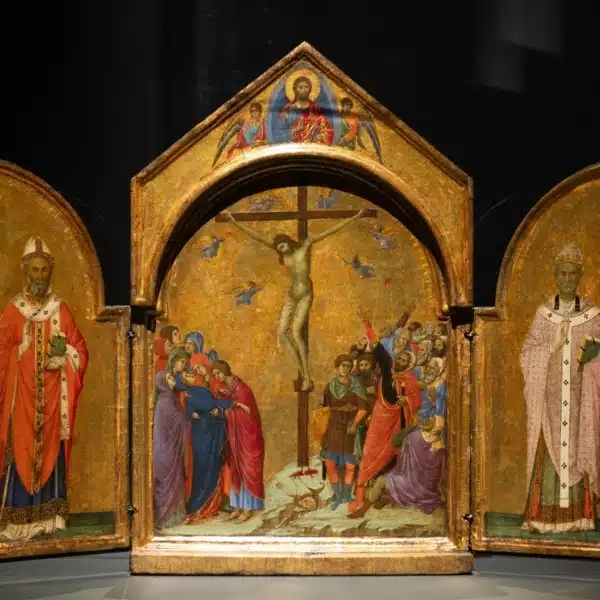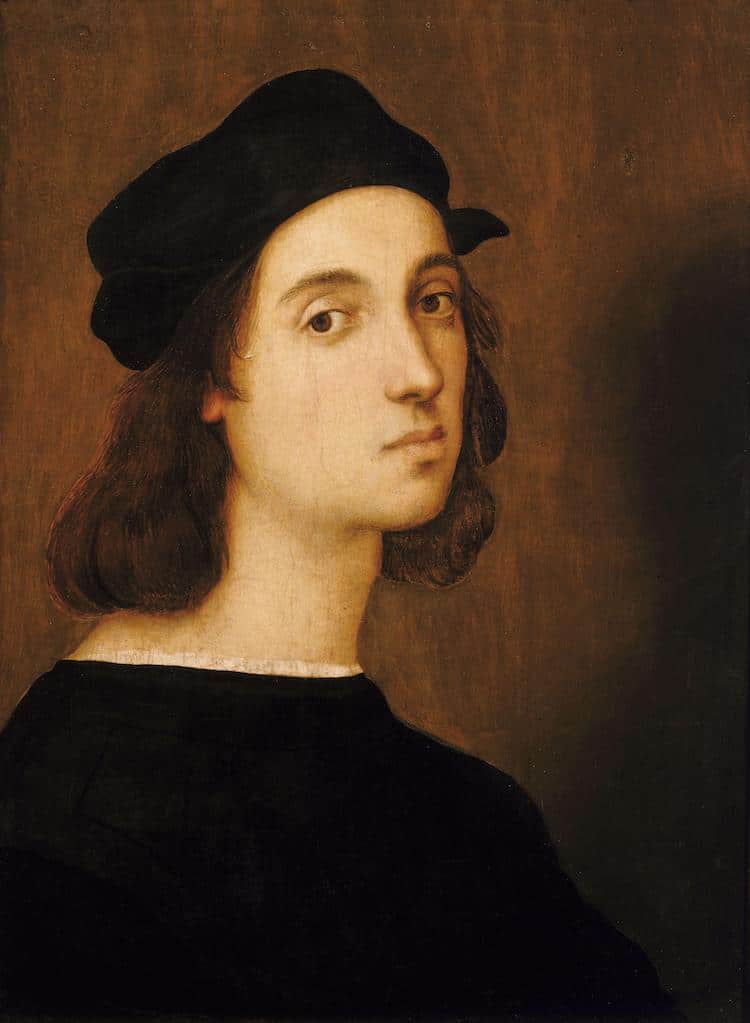
“Self Portrait” by Raphael. 1504-1506. (Photo: Wikimedia Commons [Public Domain])
In his short life, Raffaello Sanzio di Urbino left behind an incredible legacy. He quickly moved from his small town of Urbino to the heart of the Renaissance—Florence—before being summoned to Rome, where he would spend the rest of his life. While in Rome he would make a splash, charming his patrons and garnering commissions across the city.
After he died in 1520, his reputation only grew over time. His art was seen to embody the ideal beauty of the Renaissance and was considered something to emulate by future generations. In fact, up through the turn of the 20th century, Raphael's popularity far surpassed that of Michelangelo and Leonardo. Today, Raphael's work is still appreciated for its balance of line, color, and composition. In fact, his four Stanze, painted for Pope Julius II, are highlights for the millions of people who visit the Vatican in Rome each year.
Scroll down to learn more about the prolific artist that is Raphael.
Full Name | Raffaello Sanzio da Urbino |
Born | March 28 or April 6, 1483 (Urbino, Italy) |
Died | April 6, 1520 (Rome, Italy) |
Notable Artwork | The School of Athens |
Movement | Italian Renaissance |
Learn more about the life and art of the Italian Renaissance painter Raphael.
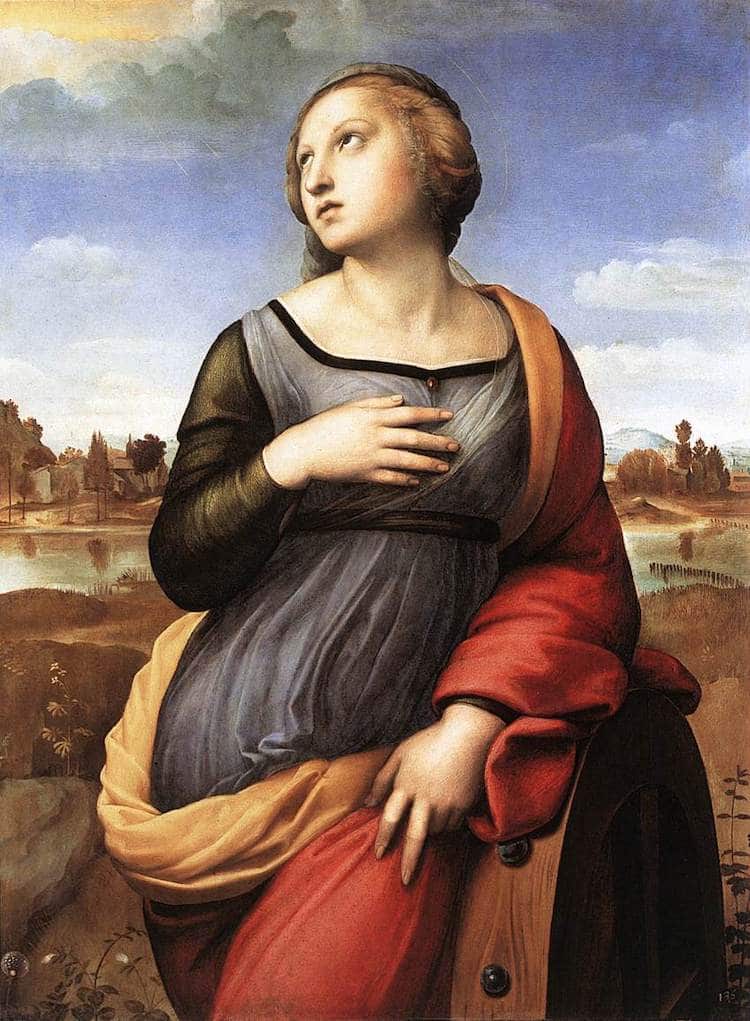
“St. Catherine of Alexandria” by Raphael. 1507. (Photo: Wikimedia Commons [Public Domain])
He is considered one of the masters of the High Renaissance
Raphael’s reputation was already cemented during his lifetime and only increased after his death. His contributions to the development of art were recognized immediately and he—along with Michelangelo and Leonardo da Vinci—is still considered one of the greatest masters of the Italian Renaissance.
He was admired for his well-rounded artistry, which saw him excel at history painting, religious painting, and portraiture. His mastery of compositions and color continues to be influential to this day.

“Portrait of Guidobaldo da Montefeltro” by Raphael. c. 1506. (Photo: Wikimedia Commons [Public Domain])
He grew up surrounded by culture
Today, when we think of the Italian Renaissance, great centers like Florence and Venice come to mind. But there were many towns across Italy that were also flourishing artistic centers thanks to small courts. This is true of Urbino, Raphael’s hometown, where the mercenary Federico da Montefeltro ruled as duke from 1444 to 1482. Under his rule, Urbino flourished as a center of culture and learning.
Though Montefeltro would die before Raphael’s birth, his heir Guidobaldo da Montefeltro and his wife Elisabetta Gonzaga would carry on his legacy throughout Raphael’s youth.
His father was a painter
Raphael had art in his blood. His father, Giovanni Santi, was a court painter in Raphael’s hometown. As such, Raphael most likely spent his formative years in contact with the court. Santi painted altarpieces and portraits for the court of Urbino, but died when Raphael was 11 years old. This left him an orphan, as his mother had passed when he was only eight years old.
Raphael was likely too young to have picked up much of his artistic practice from his father, but he certainly gained a great appreciation for the arts and humanism from an early age.
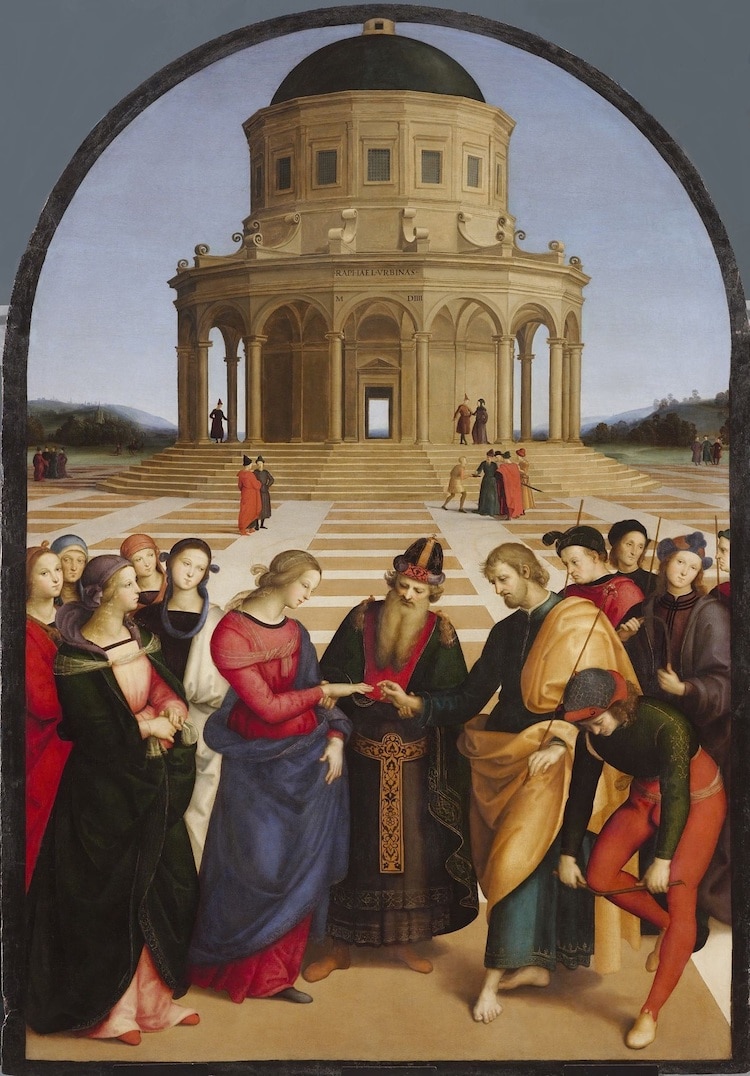
“Wedding of the Virgin” by Raphael. 1504. (Photo: Wikimedia Commons [Public Domain])
A master of the Early Renaissance was his teacher
By the time he was 17, Raphael was already considered a fully trained artist, but he wasn’t yet ready to start his own practice. Instead, the young artist followed the standard path of artists at the time and became an assistant in an established workshop.
In Raphael’s case, this meant moving to the town of Perugia and working for one of the foremost masters of the early Renaissance—Pietro Perugino. Perugino was an early adopter of oil painting and found success working for Pope Sixtus IV to paint the walls of the Sistine Chapel.
Raphael’s early style closely mimics Perugino, but Raphael soon surpassed his master. In fact, Perugino was originally asked by Pope Julius II to paint the Stanza of the Incendio del Borgo at the Vatican. However, he was soon passed over for Raphael, whose style the pope preferred. This choice would have a big impact on Raphael’s career—that room is part of what is now collectively called the Raphael Rooms and include the iconic School of Athens.
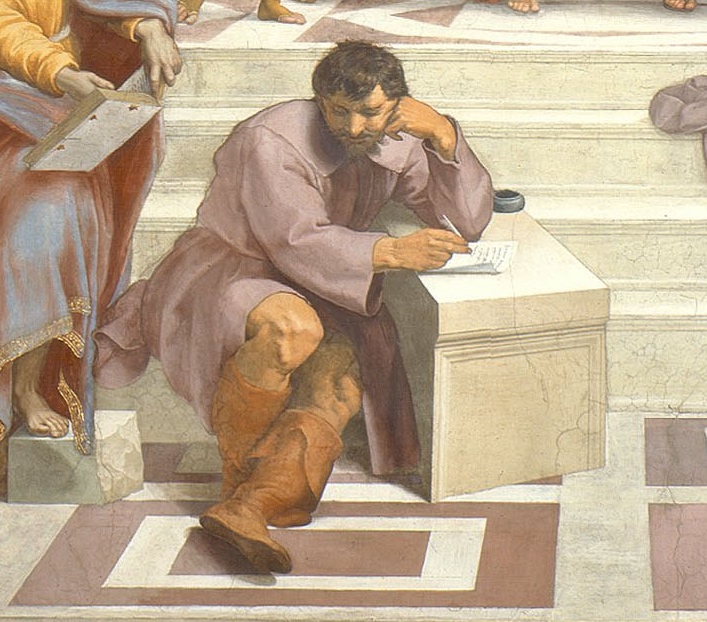
Detail of Michelangelo as Heraclitus in Raphael's “The School of Athens”
Michelangelo was his rival
By the time Raphael arrived in Rome in 1508, Michelangelo had already been hard at work for Pope Julius II for three years. Eight years Raphael’s senior and already established in his career, Michelangelo ended up working next door to the young upstart. Raphael was immediately put to work on the largest commission of his career, the Pope’s library in the Stanza della Segnatura. At the same time, Michelangelo was working close by on the Sistine Chapel ceiling.
Raphael’s painting technique garnered much attention and praise, to the dismay of Michelangelo. This sparked an intense rivalry between the artists, as Michelangelo thought that Raphael was copying him stylistically. In turn, Raphael painted Michelangelo in the School of Athens as the sulking philosopher Heraclitus.
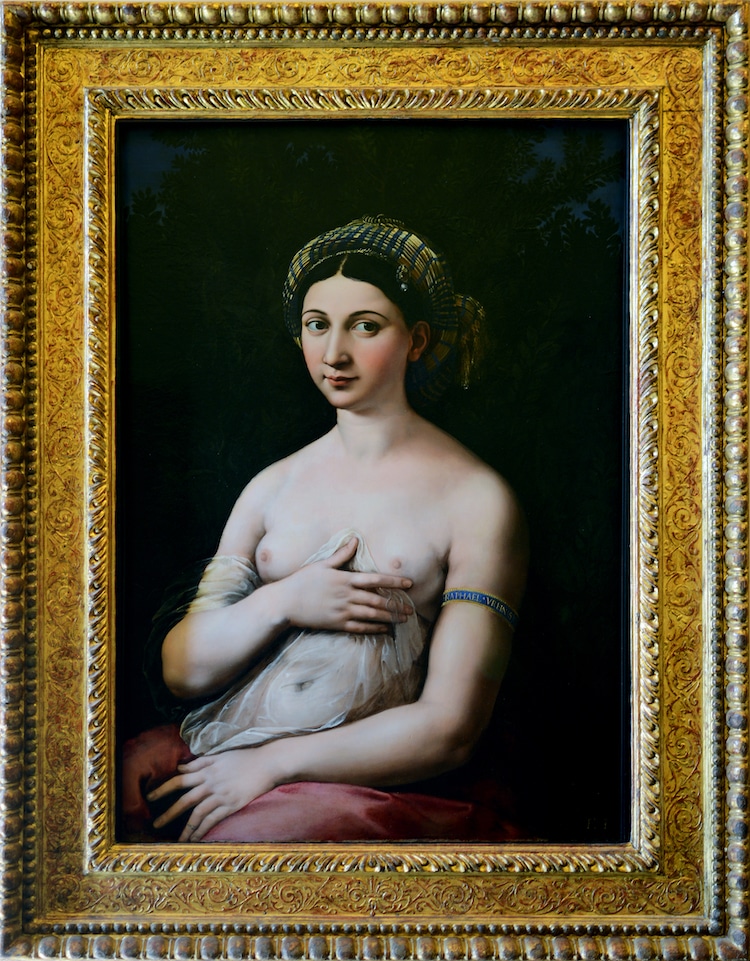
“La Fornarina” by Raphael. 1518-1519. (Photo: Wikimedia Commons [Public Domain])
He had a charming personality
In contrast with Michelangelo, who was known for his sullen and brooding nature, Raphael is remembered for his charming personality. His affable manner was perhaps cultivated during his time surrounded by the court of Urbino and certainly served him well. Not only did it earn him good standing with the elite who commissioned his work, but it also made him a great leader for his own team of artists.
Apparently, his charm also made him quite popular with the ladies. Through Raphael never married, he’s known to have had many lovers. One of the most longstanding women in his life was Margherita Luti, a baker’s daughter. His portrait of her, La Fornarina, is believed to have been in his studio when he died and now hangs at the Palazzo Barberini Museum in Rome.
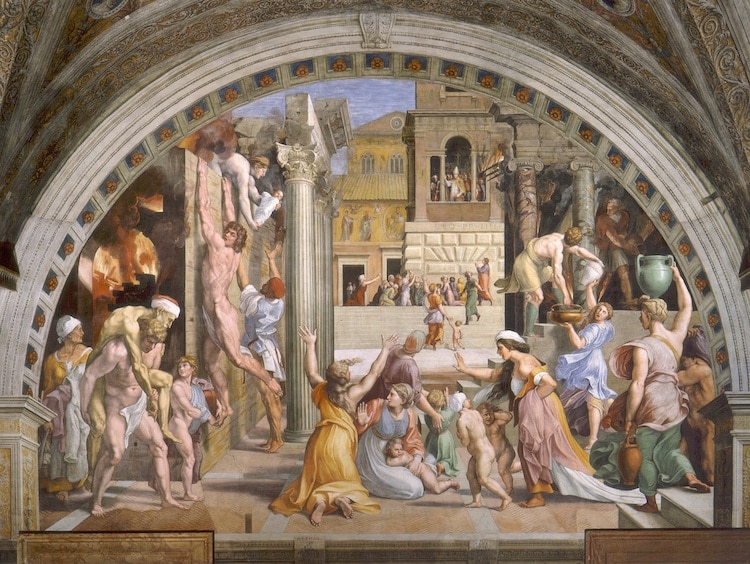
“The Fire in the Borgo” painted by the assistants of Raphael after his drawings. 1517. (Photo: Wikimedia Commons [Public Domain])
He had a lot of assistants
Once Raphael became a master in his own right, he built up a studio of 50 assistants, which was quite impressive. As was common practice at the time, his assistants were well-trained to take his drawings and transform them into finished pieces in his name.
Raphael ran a well-oiled machine, which helped him make advances on his most important commissions. As the head of the team, he would delegate out work and make sure that the quality matched his standards. The efficiency of the team meant that they were able to carry out the commissions Raphael had been working on at the time of this death. In fact, the Sala of Constantine at the Vatican was not even begun until after Raphael had died. Instead, these paintings are the work of Raphael’s top assistants, Giulio Romano, Gianfrancesco Penni, and Raffaellino del Colle, who executed them after his designs
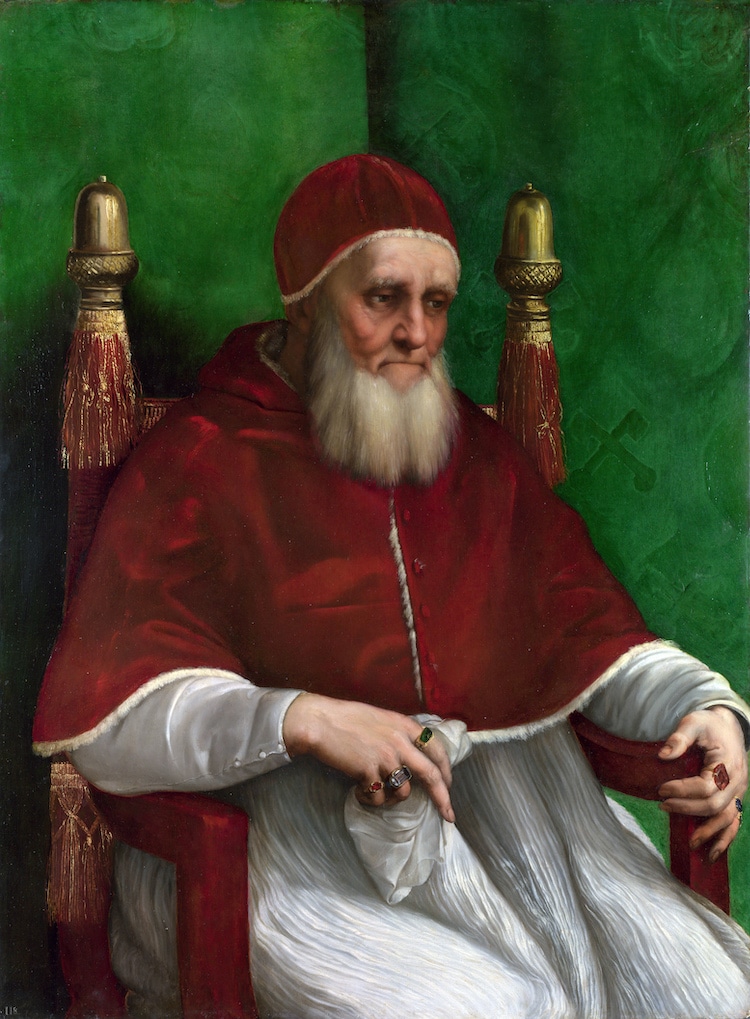
“Pope Julius II” by Raphael. c. 1512. (Photo: Wikimedia Commons [Public Domain])
He died young
Raphael packed a lot of living into his short life. He died on his 37th birthday for reasons that aren’t entirely clear. Historians have listed pneumonia, pulmonary disease, and exhaustion from being overworked as possible theories. Whatever the reason, his early death was a tragedy.
In the two weeks leading up to his passing, he put his affairs in order and requested to be buried in the Pantheon. After a grand funeral that was attended by large crowds—including the Pope—his request was granted and it’s still possible to visit his tomb today.

“The Transfiguration” by Raphael. 1520 (unfinished). (Photo: Wikimedia Commons [Public Domain])
Frequently Asked Questions
What was Raphael the artist known for?
Raphael was known as a master painter and architect of the Italian High Renaissance.
What was the cause of Raphael's death?
It's not entirely clear. Historians have listed pneumonia, pulmonary disease, and exhaustion from being overworked as possible theories.
What is Raphael's masterpiece called?
Raphael had many masterpieces, among them The School of Athens, The Sistine Madonna, and The Transfiguration.
This article has been edited and updated.
Related Articles:
8 Renaissance Artists Whose Work Transformed the Art World
Who Is Giotto? Learn About the Life and Art of the Father of the Renaissance
Who Is Titian? Exploring the Life and Art of the Renaissance Master of Color
Learn About Masaccio, the Italian Renaissance Painter With a Short Life but Long Legacy











































































